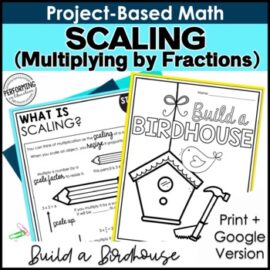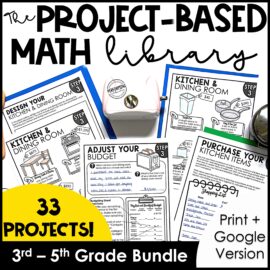Project-Based Learning (PBL) goes beyond the worksheet to show students how and when their math skills interact with real-life applications while providing engaging, scaffolded lesson opportunities for higher order thinking. Elementary students are no stranger to asking the age old question of “why do I need to know this?” A PBL activity in mathematics can be just the answer a teacher needs. The Project-Based Math Library, available for upper elementary, has tons of options to breath relevance and hands-on opportunities into elementary mathematics.
Engaging with Scaffolded, Thought-Provoking PBL
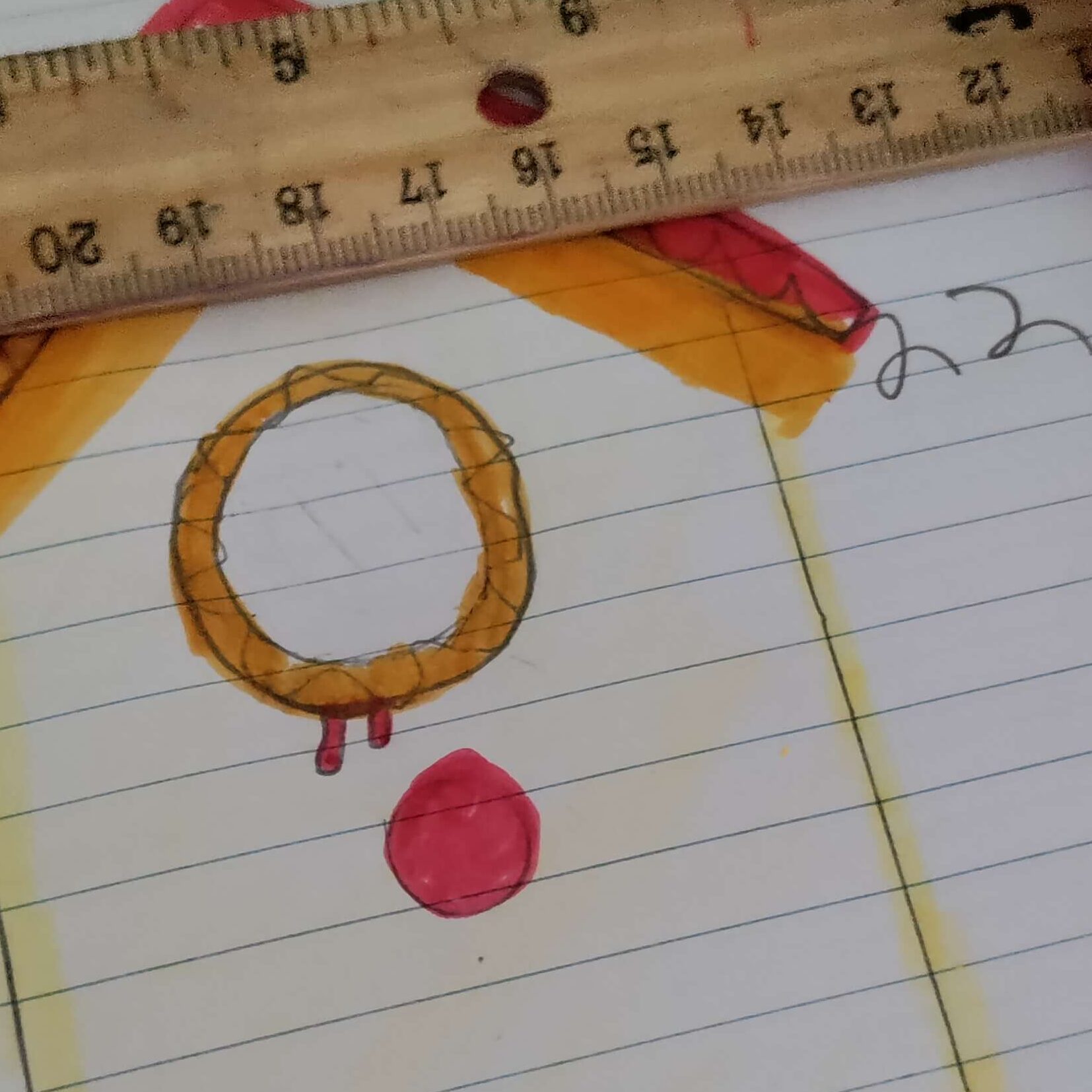
While traditional math stories, or word problems, can certainly challenge students to use their knowledge of newly learned operations, they can also confuse students who have difficulty translating the material into a mathematical expression. The topics can also seem strange for students and lead to frustration about what is actually being asked. Who would divide a cupcake into 16 pieces in the first place?
However, students can identify with the step-by-step guided process in PBL activities such as this Birdhouse Math activity which supports lessons in Scaling and Resizing–a topic that can lead to head scratching, for sure. The work is scaffolded, building on previous knowledge and slowly tying together how those skills relate to the task at hand.
Through a KWL sheet, teacher and students can assess what is already known before jumping into review of skills that will be needed, such as multiplication and fraction concepts. Students can also practice in real-life terms how these two skills will be used together. As PBL is generally a longer-term goal with a driving question, students have the time to work through mistakes, learn from them, and perform higher-order thinking that leads them to mastery.
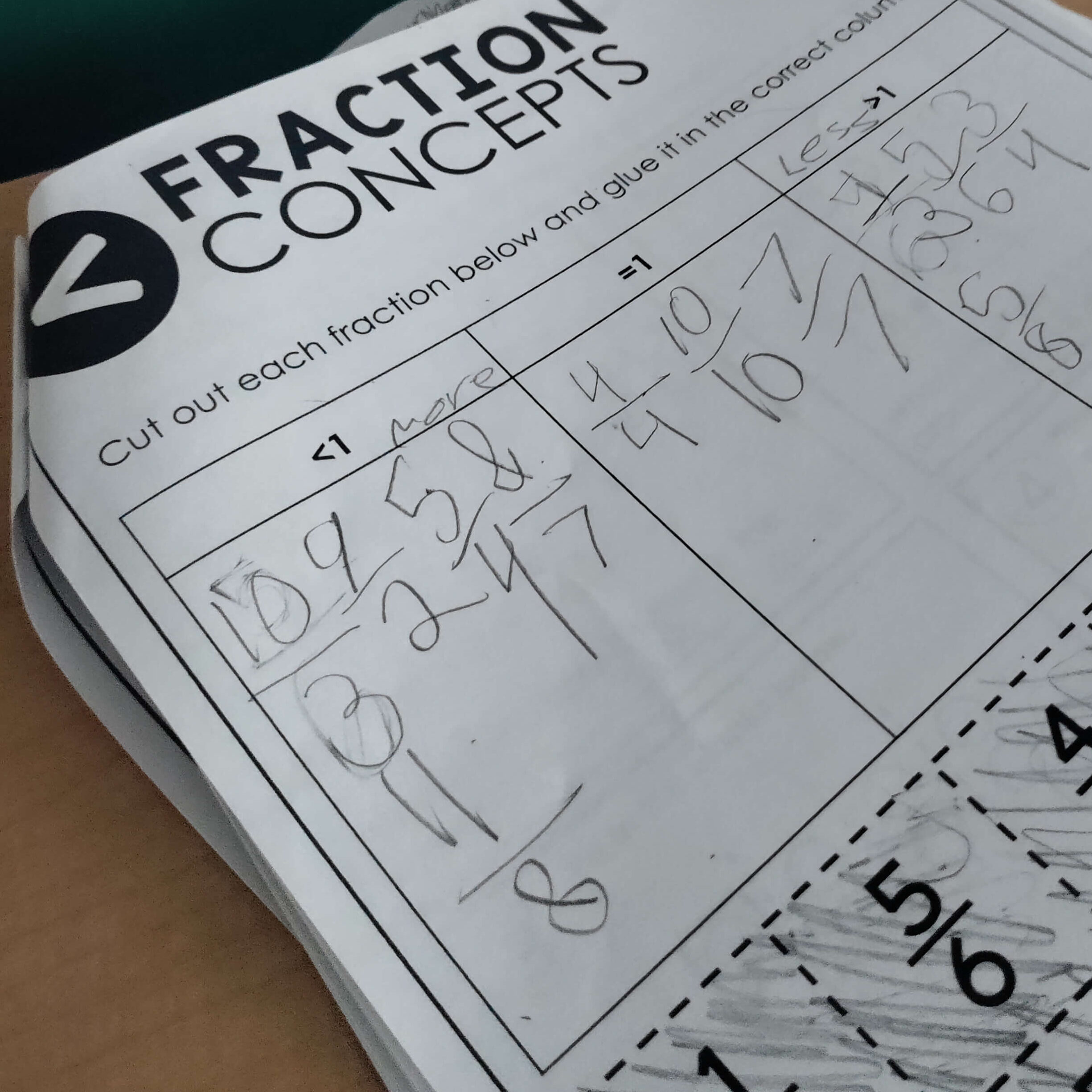
Without the constraints of a traditional workbook, it is ok for the student or teacher to go back at any point to review any spots of misunderstanding. For example, students may have a clear understanding of fractions smaller than 1 but may not have been introduced yet to improper fractions–or how to turn them into a mixed fraction. There may be deficits in multiplication to address, along with the eyebrow-raising discovery of a “smaller answer” when multiplying by a fraction.
Teachers can pull students into groups to work directly on that background knowledge needed to move forward successfully while other students work on their PBL project. Each page of the PBL can be chunked into lessons or students can collaborate and forge ahead together. There’s so much flexibility in a PBL activity allowing time to gather “aha” moments from students across multiple concepts with just one project.
Next steps in the activity move onto instruction of the mathematical concepts needed to complete the student’s Project-Based Learning goal. Students can explore the new concepts at first in low-risk ways like comparing and contrasting to assess understanding before completing computations. Trying out the new concepts over a series of steps–and a series of small wins–encourages growth mindset in students. PBL is the perfect moment to practice perseverance and productive struggle. Students have a clear project goal and math skill to work toward and they are more than motivated to get there.
Relevance and Context in Project Based Learning
Students take ownership over Project-Based Learning activities because the lessons are designed to be flexible and engaging–but also they can relate the math concepts to their lives. They can improve upon their work as they go and become an expert while they work toward the end product, applying their new knowledge. The best PBL activity will be something that sparks the interest of your students and meets the needs of their contextual knowledge.
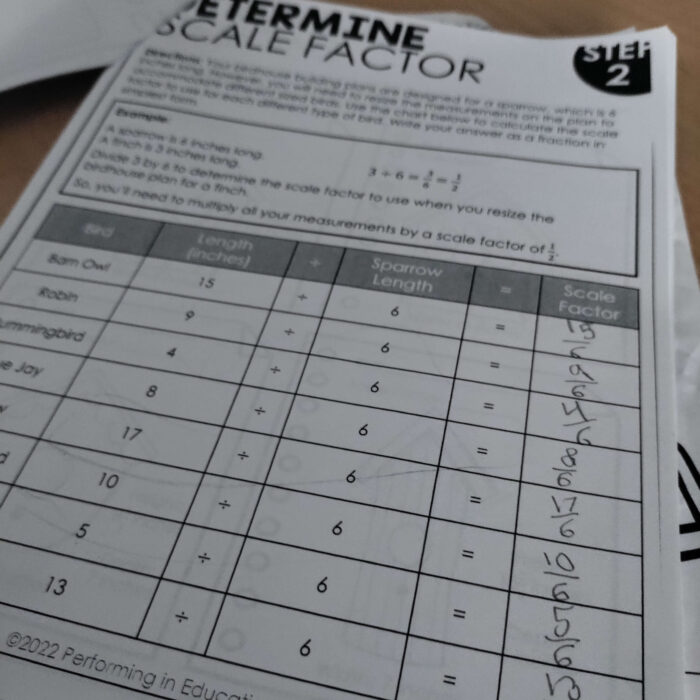
Students may wonder why we would ever need to multiply a whole number by 3/8 in real life but explaining it to them in terms of construction of a birdhouse may not only make it more relevant but trigger a sense of purpose to house our feathered friends. Other classrooms may have more interest or relation to a cooking scenario, shopping, gardens, or other activities available in the Project-Based Math Library .
Project-Based Learning opens up doors for even further exploration and research of topics as students engage in inquiry. For example, the class might want to take on a building project with construction materials or have a class visitor such as an architect who can share their strategies and blueprints. As students take an active role in their learning process they will be inspired to go above and beyond. What was once a math activity can overlap as cross-curricular, tying into sciences and ELA. That’s a win-win!
A PBL activity for is a great way to jump start student inquiry when teachers want a way to make numbers come alive for their students.
Learn more about how to fit PBL into your hectic teacher schedule.
